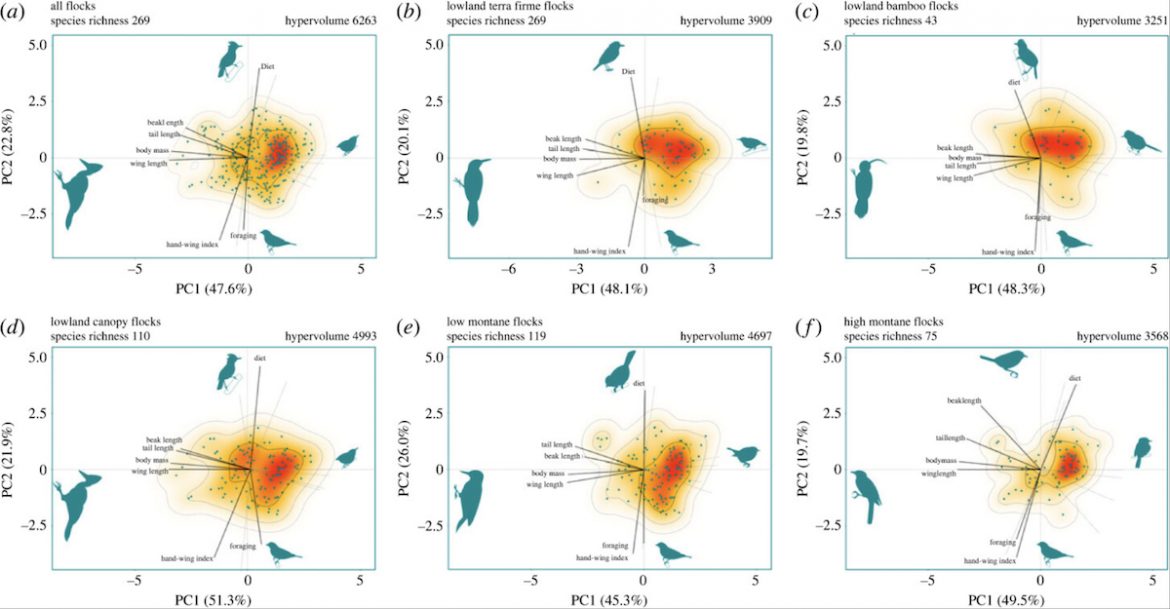
Figure 4. Functional trait space for 269 flocking species in the Manu bird community. Trait space summarizes the first two principal components (PC1 and PC2) describing the variation for seven z-transformed traits: body mass, beak, wing, tail, hand-wing index, foraging and diet. Points indicate individual species; arrows indicate the weight (loadings) and direction of trait vectors. Note that vectors are enlarged for better visualization, so their lengths show only differences in variance explained relative to each other. Contour lines show the 0.5, 0.95 and 0.99 quantiles of the probability distribution of bird traits. The colour gradient indicates regions of highest (red) to lowest (white) occurrence probability of trait combinations for the (a) overall flocking species in the Manu community, (b) lowland terra firme flocks, (c) lowland bamboo flocks, (d) lowland canopy flocks, (e) lower montane flocks, and (f) high montane flocks. Raw hypervolume and species richness are indicated for each assemblage. (Online version in colour.)
Abstract
Mixed-species flocks are an important component of bird communities, particularly in the Neotropics, where flocks reach their highest diversity. The extent to which mixed-species flocks represent unique functional or ecological roles within communities, and how these attributes change over environmental gradients, however, is not well understood. We use a trait-based approach to examine functional aspects of flocking assemblages as they relate to those observed in the larger avian community across a 3000 m elevational gradient. Our results reveal similar ecological strategies among flocking species and the communities in which they occur, at the scale of the regional pool and across elevations. Trait variation in flocking and non-flocking assemblages is structured along two major axes defined by size- and resource-related traits. The trait space occupied by flocking species, however, represents only half (51%) that of the larger community. Similarly, the trait space of flocks across elevations is restricted compared to non-flocking species. The shared trait space across flock types represents small-bodied invertivores foraging in lower forest strata, traits associated with increased vulnerability to predation. The concentration of flocking species in functional trait space suggests high niche packing and either more overlap in ecological strategies or more finely divided niches relative to non-flocking species.
This article is part of the theme issue ‘Mixed-species groups and aggregations: shaping ecological and behavioural patterns and processes’.